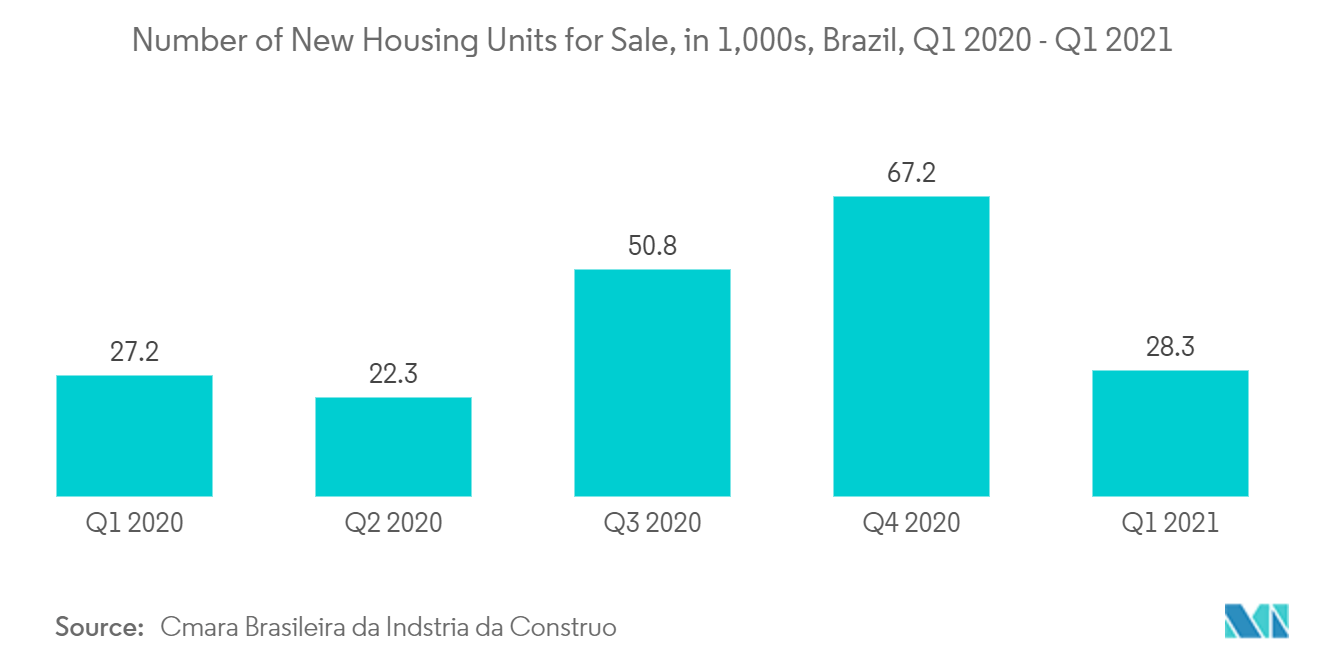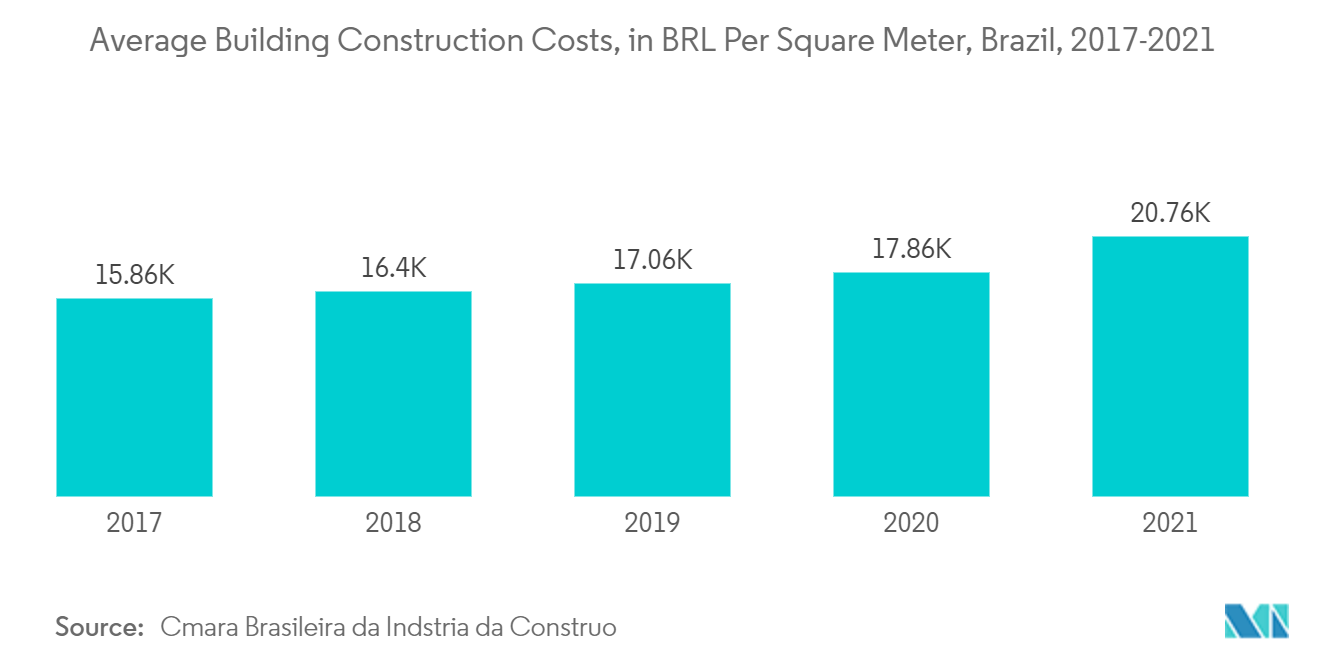Market Trends of South America Concrete Admixtures Industry
This section covers the major market trends shaping the South America Concrete Admixtures Market according to our research experts:
Increasing Consumption of Concrete Admixtures in the Residential Sector
- Growth in population, migration from hometowns to service sector clusters, and the growing trend of the nuclear family are some factors driving residential construction worldwide. Besides, the decreasing land-to-population ratio and the growing trend of constructing high-rise residential buildings and townships have been driving the application of concrete admixture in the residential construction segment across the world.
- Increasing government initiatives propelling the demand for affordable housing stimulates market expansion.
- In addition, the rising household income levels, combined with the population migrating from rural to urban areas, are expected to continue to drive the demand for the residential construction sector. The increased focus on affordable housing by both the public and private sectors is driving the growth in residential construction.
- According to the Câmara Brasileira da Indústria da Construção, Brazil had 28,300 new housing units for sale in the first quarter of 2021. The research considers 37 Brazilian cities as well as 16 metropolitan areas.
- Factors such as rapid urban migration in major economies, increased government spending in the real estate market for residential construction, and the growing demand for high-class residential homes are likely to benefit the growth of the market studied. In addition, rising real estate costs, particularly the development of single-family homes and multistoreyed apartments in emerging economies, are anticipated to further boost the concrete admixtures market.
- According to the National Institute of Statistics and Censuses (INDEC), the construction activity index in Argentina rose by 5.2% year-on-year. In the first nine months of the year, it registered an accumulated increase of 6.3% compared to the same period in 2021.
- The Brazilian government plans to invest BRL 278 billion (~USD 52.19 billion) in popular housing and urbanization works by 2025. This amount will allow the contracting of up to 2.5 million housing units with very reduced interest rates.

Brazil to Dominate the Market
- Brazil dominates the South American market with a significant market share and is projected to maintain its dominance during the forecast period. The significantly increased construction activities are the primary factor driving the growth of the target industry.
- The construction sector accounts for more than 3.2% of the country's GDP. The country spends 2% of its GDP on infrastructure.
- According to the Câmara Brasileira da Indústria da Construção, in 2021, the average cost of building construction per square meter in Brazil exceeded BRL 20,000 (~USD 3,806), which is twice as high as in 2010. These values include the basic expenditures of building construction, such as materials, labor, equipment, and administration. In that year, the major contributor to building expenses was labor expenditures in Brazil.
- The Brazilian government invested BRL 866 million (~USD 162.56 million) in 762 infrastructure projects to improve the conditions of Brazilian tourist cities and valorize the sector's potential, attracting even more visitors and receiving them with more comfort.
- The improvements included renovations and construction of event spaces, public squares, waterfronts, asphalt paving, and viewpoints, among other interventions. In the north-east, 268 projects were completed, with BRL 274.7 million (~USD 51.57 million) in investments. The south was the second to receive the most improvements, with 219 projects, followed by the southeast, with 155.
- According to the Brazilian Institute of Geography and Statistics (IBGE), the construction industry's value adds remained strong in the first quarter of 2022 and posted a growth of 9% year-on-year (YoY).
- Jundiai Reserva Alta Vista Residential Complex, which is expected to be completed by Q3 2023 and involves the construction of a residential complex in Jundiai, Sao Paulo costs about USD 50 million.
- Nex One Alto da Boa Vista Residential Complex, which is expected to be completed by Q2 2023 and involves the construction of a residential complex at Santo Amaro in Sao Paulo is estimated to cost USD 30 million.


